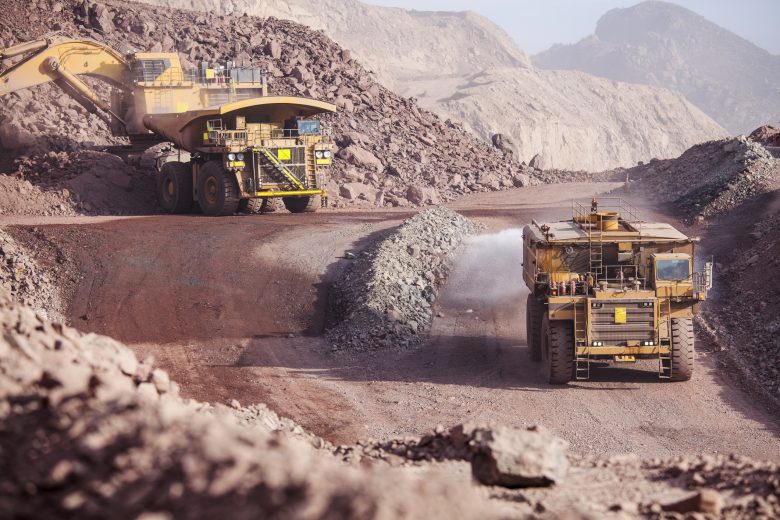Mining is a dangerous profession. In 2017 alone there were 28 fatalities in the U.S. Although this represents a downward trend in mining-related deaths, any number of fatalities and injuries is too high to accept.
Most incidents in the mining industry are caused by powered haulage and machinery. Experienced miners are just as likely to be killed as new hires because these hazards don’t discriminate based on experience—powered haulage doesn’t get safer with use. It actually can be more dangerous as workers gain experience and become complacent, which lowers their perception of danger and makes them more prone to skipping vital safety steps like wearing a seat belt or performing a thorough inspection of equipment. This is why rules and regulations always need to be followed—to counter the dangerous influence of complacency.
Safety inspections and checks
Over time, pre-operational checks can end up being performed in a perfunctory manner, or sometimes they’re even only done on paper. That’s because the majority of such inspections tend to result in a lot of ticked boxes and only confirm that equipment is safe to use. But inspections and checks exist for those rare cases when something is out of order and catching it in time can prevent serious injury and death.
Each piece of equipment should have its own pre-operational safety checklist, which should always include braking systems, seat belts and mine-specific brake performance test procedures (especially after brake maintenance). It’s also a good idea to expand the checklists based on workers’ suggestions or past issues relevant to the site and the type of equipment.
Inspections are not always about checking the equipment itself, but also about the worksite. Instill in employees a habit of getting out of their machines and checking the work area before performing a task. The sheer size of power haulage machinery makes it impossible for workers to notice every single detail around them while operating the equipment. It is much better practice to take a few extra moments to perform a site check and ensure everyone’s safety.
Traffic rules
Speed limits and traffic rules apply even off the beaten track and should be observed. There is no job so important that its completion overrides safety. In addition, only haulage equipment of appropriate grade should be used on public roads.
Seat belts
The use of seat belts should not only be mandated but also regularly checked. Workers also need to understand that improperly worn seat belts won’t provide the restraint necessary to protect them. Constant vigilance and positive reinforcement can help them develop the right attitude and build safe habits regarding seat belt use.
Ground control methods
Adequate berms should be provided on solid ground and maintained at an appropriate height. It’s important to remember that the berm’s solid base is just as crucial as its height. Sometimes material is simply dumped over the edge of the work area until it is able to hold a berm of the proper height. But if a berm isn’t built properly it will collapse as soon as a tire hits it. Berms need to have the strength to compact or direct the driver back on the road.
Ensure that there are grades at the top of highwalls that slope down and away from the edge. The same applies to the dump area, which should also be sloped so that trucks must back up a slight incline. Train truck drivers to always maintain the truck perpendicular to the edge when backing up at a dump site. Additionally, employees should be taught and encouraged to dump short and maintain a safe distance from the drop-off.
Training
There are courses and other training requirements designed to improve miner safety. Without training, workers are vulnerable to avoidable injuries and fatalities, and providing employees with thorough, in-depth task training to cover potential hazards is vital. But compliance can become patchy without encouragement.
This is why training should include building habits, establishing and discussing safe work procedures before each shift, and ensuring that safety is discussed daily. This type of commitment and daily focus on safety will make workers more likely to follow procedures, compliance can go up and the number of incidents can decrease.
Safety culture
Safety doesn’t just happen. It takes a company-wide effort, from top management to the people working on the ground. If employees don’t feel encouragement and care coming from the top, they won’t follow the instructions they don’t deem necessary. When monitoring work habits and examining work areas, don’t simply check that safe work procedures are followed, but also encourage them to be followed through praise, positive comments and regular toolbox talks. It’s empowerment and not bullying or punishment that brings the best results.
Additionally, encourage workers to look out for each other. Most people never think that an incident is going to happen to them but they understand that one might very well happen to others. Keeping an eye out for each other’s safety will help with worker morale and develop a stronger team spirit.
Ask questions, build a dialogue and really listen to your employees. They might have valuable ideas or concerns you don’t even know about. Ensure that they don’t feel so rushed that they ignore safety precautions or so fatigued that they’re at risk of driving drowsy. If they are, focus on the causes and not the symptoms. If you address their worries and make them feel truly cared for, you’ll be on your way to creating a truly great safety culture.
Identifying and controlling all hazards associated with the work that needs to be performed is not only a requirement but also a duty. We should never forget that no matter how safe a piece of equipment is, it can easily become dangerous when operated by someone who is complacent or feels under pressure to rush. Creating a safety culture and encouraging safe habits improves compliance and keeps people safer, which is priceless in hazardous industries such as mining.

